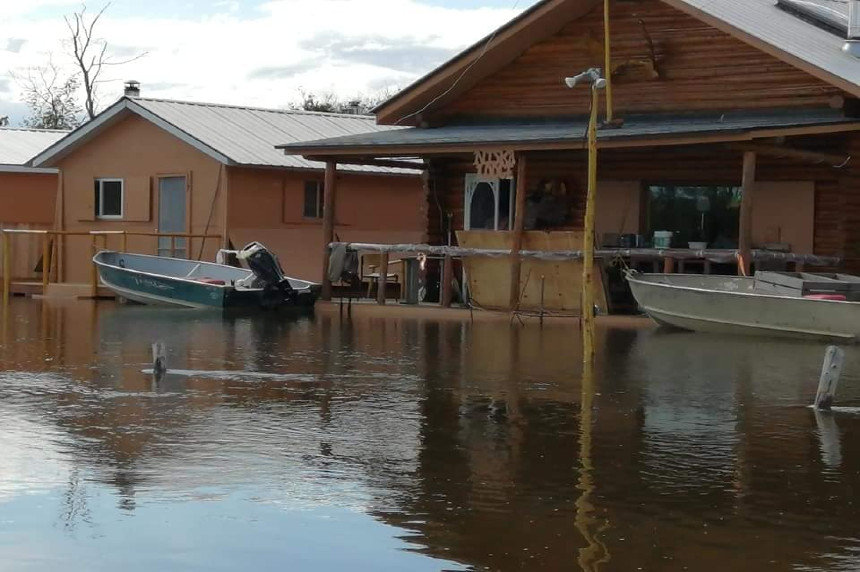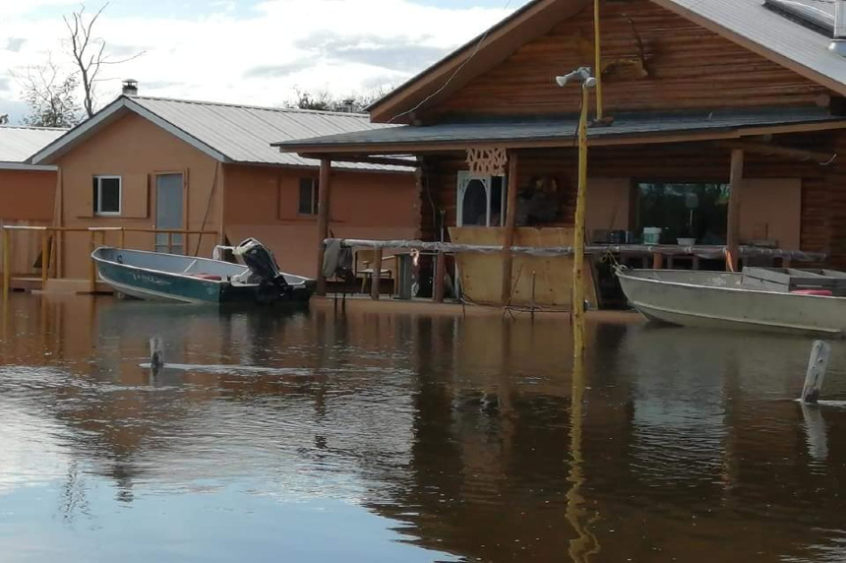By Caitlyn Anhorn
Rivers are the veins of the planet, running over and through the land until they reach a greater destination. Carrying freshwater, rivers provide life to all sorts of creatures. They are incredibly important and play an immense role in sustaining life on our planet.
Though rivers play these important roles, human activity and infrastructure have disrupted their patterns and rhythms for centuries. While green energy is an important step to decrease our global carbon footprint, infrastructure such as dams have a large impact on the ecology of their surroundings.
The Saskatchewan River travels through the land from the Rocky Mountains in Alberta, through several hydropower dams, including the Gardiner and EB Campbell Dams. These dams play a large role in disrupting the natural regimes of the Delta and its species.
General Dam Effects
Recent E.B. Campbell dam relicensing has imposed a minimum instantaneous river flow rate of 100 m3/s, with a minimum daily average flow rate of 150 m3/s. In other words, these minimum flow rates do not represent near-natural levels and therefore affect the natural functioning of the Delta.
Locals experience sudden increases and/or decreases in water levels at different times. Specifically, higher demand for power during certain times of the day (e.g. mornings and evenings) results in hydropeaking, which is the rapid release of more water to generate more power. After the hydro peak period, many fish get stranded due to the sudden decrease in water flow.
Fish spawning is also affected by the dam’s water controls. For example, Goldeye used to be abundant in the Delta, but are now rare in the region. Historically, Goldeye spawned in the Old Channel, which no longer receives the water flow levels it needs to be productive, though dredging projects are now underway to help with this. Additionally, Lake Sturgeon spawn at two outlets of Cumberland Lake: Bigstone Rapids and the Tearing River. As Cumberland Lake levels decrease, there is concern about these water outlets as well.
Further upstream, the reservoir on the Gardiner dam (Diefenbaker Lake) can store a fair bit of water. This impacts the overall water flow with less water arriving to the Delta in the summer. Thus, less water reaches wetlands within the Delta. This leads to a decline in the health of wetlands, and thus less suitable habitat for the wildlife that were once able to thrive. At one time, for example, the Delta sustained an abundant moose population. Moose populations have since decreased in the area due to less food and more terrestrial predators and parasites.



Winter Freeze Up
In general, the cold winter temperatures in Saskatchewan cause water bodies to freeze, at least on surface levels. Freeze-up typically lasts for roughly five to six months, from late October until April. However, winters tend to hit the Delta particularly hard.
Cumberland Lake is the largest lake in the Delta, but the lake has shrunk in size due to lower overall flow. The lake is now roughly one meter deep and nearly freezes to the bottom, largely impacting fish populations.
During the winter, stored water is released through the EB Campbell dam for power generation. After freeze-up, these heavy flows do great damage, especially for muskrat homes. Muskrats prepare for freeze-up by building shelter for winter, but do not know to prepare for the unnatural changes in flow that will affect their home in mid-winter.
As water is released during the winter, this unnatural flow also impacts beavers who build their homes based on predictable ice levels. When water is released unnaturally from the dam, extra layers of ice build up and either traps them in their dens or forces them into the open where they are vulnerable to predators.
Rejuvenating Floods
Natural floods are important for rejuvenating various parts of the water system within the Delta. The influx of water provides nutrients and oxygen to the water bodies. It provides fresh water to the wetlands that are further from the main river and prevents them from drying out.
Species like muskrat depend on these floods for their habitats and food sources. Floods can also help prevent certain plants like willows or invasive species from taking root.
Spring Melt Down
Historically, there have been two annual floods in the Delta – one from local snow melt in May and another from Rocky Mountain snow melt in July. However, flooding in the Delta now looks different every year due to the dam’s water controls. Locals have also noticed that water is held back at the reservoirs for various reasons, specifically at the springtime melt.
While natural floods are necessary for Delta rejuvenation, there have been increased major unnatural floods in recent years. Though floods are needed for ecosystem rejuvenation, these major floods do more damage than good.
Immediately at major flood times, fish expand their range but then are stranded as the water rapidly decreases. Bird nests are flooded on the water’s edge and many are abandoned. Many mammals like moose and rabbits try to get to higher ground but are not able to make it in time.



Overall, River Flow Impacts Many Species
At different times of the year, there are different types of impacts on the species of the Delta, but the reality is that these impacts make it difficult for the Delta to function productively. The upstream reservoir flood controls impact the ecological integrity of the ecosystems downstream. The unnatural flow regimes wreak havoc on the Delta’s natural functioning and capacity to support the incredible abundance of life that calls the Delta home.
Hydropeaking, rapid changes in water levels, winter water releases, holding spring and summer water back, and unnatural major floods are some ways that the dam impacts the Delta. Fish stranding, fish spawning, muskrat homes, moose forage, and bird nests are just some of the effects that the ecosystems see.
Overall, it is necessary that all citizens are aware of the Saskatchewan River Delta, North America’s largest inland delta. We all need to do our part in helping conserve and restore the Delta, its ecosystems, and its species.

